24 Compute the Cost of a Job Using Job Order Costing
Patty Graybeal
To summarize the job order cost system, the cost of each job includes direct materials, direct labor, and manufacturing overhead. While the product is in production, the direct materials and direct labor costs are included in the work in process inventory. The direct materials are requested by the production department, and the direct material cost is directly attached to each individual job, as the materials are released from raw materials inventory. The cost of direct labor is recorded by the employees and assigned to each individual job. When the allocation base is known, usually when the product is completed, the overhead is allocated to the product on the basis of the predetermined overhead rate.
The construction industry typically uses job order costing and accounts for its costing in a manner similar to the businesses profiled in this chapter.
Determining the Costs of an Individual Job Using Job Order Costing
When a job is completed, the costs of the job—the direct materials, direct labor, and manufacturing overhead—are totaled on the job cost sheet, and the total amount is transferred to finished goods at the same time the product is transferred, either physically or legally, such as in the case of a home built by a contractor. Finally, when the product is sold, the sale is recorded at the sale price, while the cost is transferred from finished goods inventory to the cost of goods sold expense account. (Figure) shows the flow of costs from raw materials inventory to cost of goods sold.

At all points in the process, the work in process should include the cost of direct materials and direct labor. When the job is completed and overhead assigned, the overhead allocation increases the cost of the work in process inventory. The cost of each individual job is maintained on a job cost sheet, and the total of all the work in process job cost sheets equals the work in process inventory and the statement of cost of goods manufactured, as you have learned.
A job cost sheet is a subsidiary ledger that identifies the individual costs for each job. (Figure) shows the job cost sheet for Job MAC001.
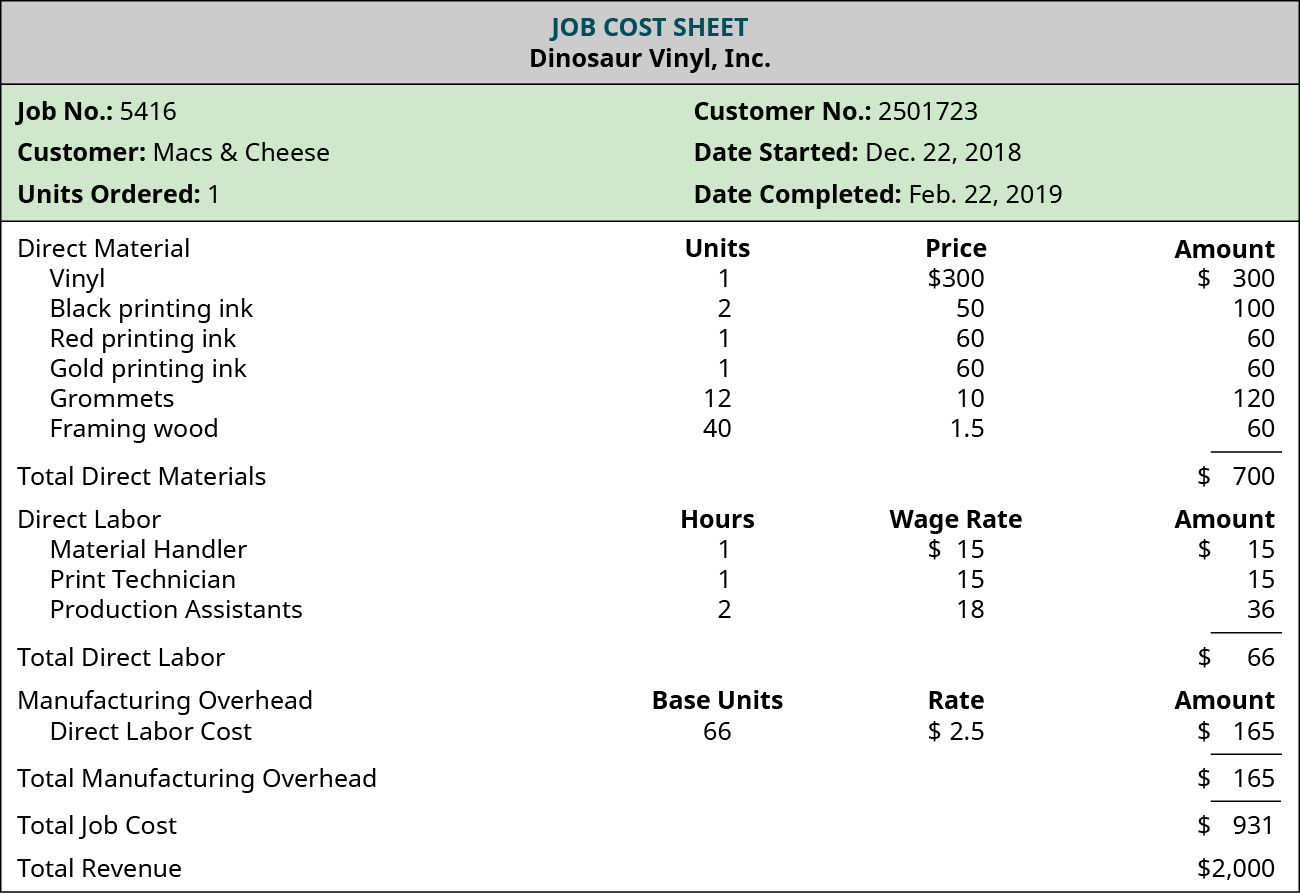
Sample Cost Information for Dinosaur Vinyl
Dinosaur Vinyl worked on three jobs during the month: POR143, MAC001, and TRJ441, and a fourth Job SWM505 had been finished and moved to the finished goods inventory account during the previous month.
At the beginning of the month, the company had a beginning raw materials inventory balance of $2,500, and during the month, it purchased an additional $10,500, giving it a total of $13,000 in raw materials available for use in production.
The following example will examine four different production jobs. Each of the four will be at beginning stages at either the beginning of the current month or the end of the current month.
- Job POR 143: This job was the only work in process inventory at the beginning of the current month, and it had $1,000 in direct material costs, and $0 of direct labor costs already allocated to the work in process inventory. During the current month, additional direct materials of $200 and direct labor of $150 were added to POR143. An overhead cost of $375 was applied to POR143 at the predetermined overhead rate of $2.50 per direct labor dollar. It was finished during the month and transferred to the finished goods inventory. The sale was not finalized during the month, so it continues to be part of the finished goods inventory.
- Job MAC 001: This job was started and completed during the month. Since the job began in and was completed in the same month, there was no beginning balance in the work in process inventory. During the month it incurred $700 in direct materials costs, $66 in direct labor, and $165 of overhead applied to the job before it was transferred to the finished goods inventory upon completion. The sale was finalized during the month at a sale price of $2,000, so the costs were transferred from finished goods inventory to cost of goods sold.
- Job TRJ441: This job was started during the current month. Its costs consist of $500 in direct material cost, $150 in direct labor expenses, and $375 in applied overhead. The job remains in the work in process inventory awaiting assembly.
- Job SWM505: At the beginning of the month, this job was completed and already in the finished goods inventory at a cost of $1,531. Since it was completed, it did not incur any additional costs in the current month. It was sold during the month for $3,500, and the costs were transferred from the finished goods inventory to cost of goods sold.
The cost of raw materials used is calculated as shown:

The individual job cost sheets show the $1,400 worth of materials used in production:
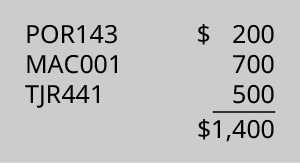
The cost of goods manufactured is accounted for as shown:
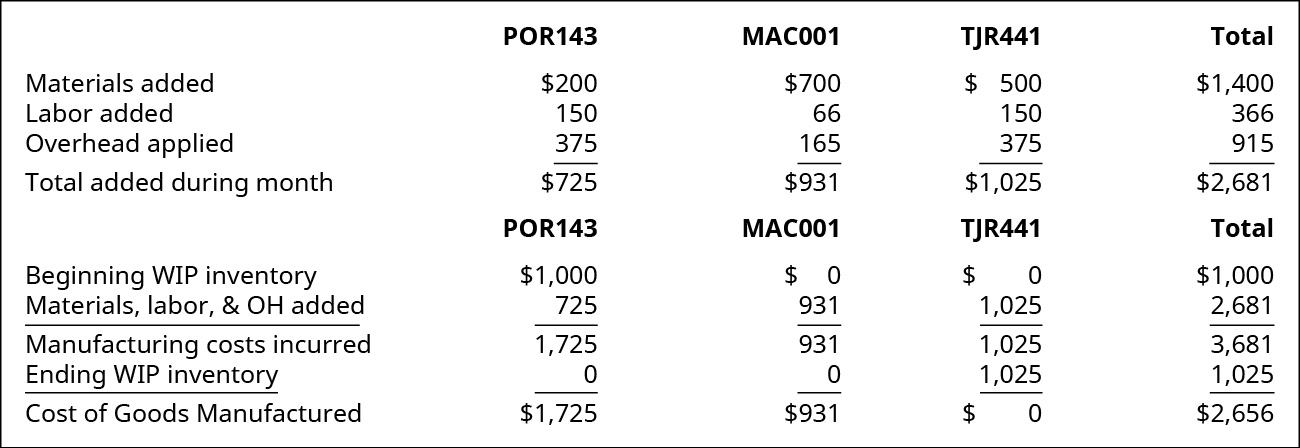
Notice the costs for Job TJR441 are included in the work in process inventory, whereas the costs for POR143 and MAC001 were transferred to the cost of goods manufactured. The costs of the jobs transferred are shown in the cost of goods sold and the finished goods inventory:

Mechanics of Job Order Costing for Dinosaur Vinyl
The amounts in raw materials, work in process, and finished goods inventories compose the total cost for each account, whereas the job cost sheets contain the costs for each individual job. A summary of the jobs for Dinosaur Vinyl is given in (Figure).

A manufacturing company has incurred these costs:

What is the cost allocated to Job A? For any costs not used, explain why they are not used.
Key Concepts and Summary
- Costs from the materials requisition sheet and time tickets are recorded on the job cost sheet.
- Overhead is allocated from the manufacturing overhead account to the individual jobs and recorded on the job cost sheet.
- Each job has its own job cost sheet, showing the materials, labor, and overhead for each job.
(Figure)Why are the overhead costs first accumulated in the manufacturing overhead account instead of in the work in process inventory account?
(Figure)K company production was working on Job 1 and Job 2 during the month. Of the $780 in direct materials, $375 in materials was requested for Job 1. Direct labor cost, including payroll taxes, are $23 per hour, and employees worked 18 hours on Job 1 and 29 hours on Job 2. Overhead is applied at the rate of $20 per direct labor hours. Prepare job order cost sheets for each job.
(Figure)Inez has the following information relating to Job AA5. Direct material cost was $200,000, direct labor was $36,550, and overhead applied on the basis of direct labor hours was $73,100. What was the predetermined overhead rate using the labor rate of $17 per hour?
(Figure)Job cost sheets show the following information:

What are the balances in the work in process inventory, finished goods inventory, and cost of goods sold for January, February, and March?
(Figure)Complete the information in the cost computations shown here:
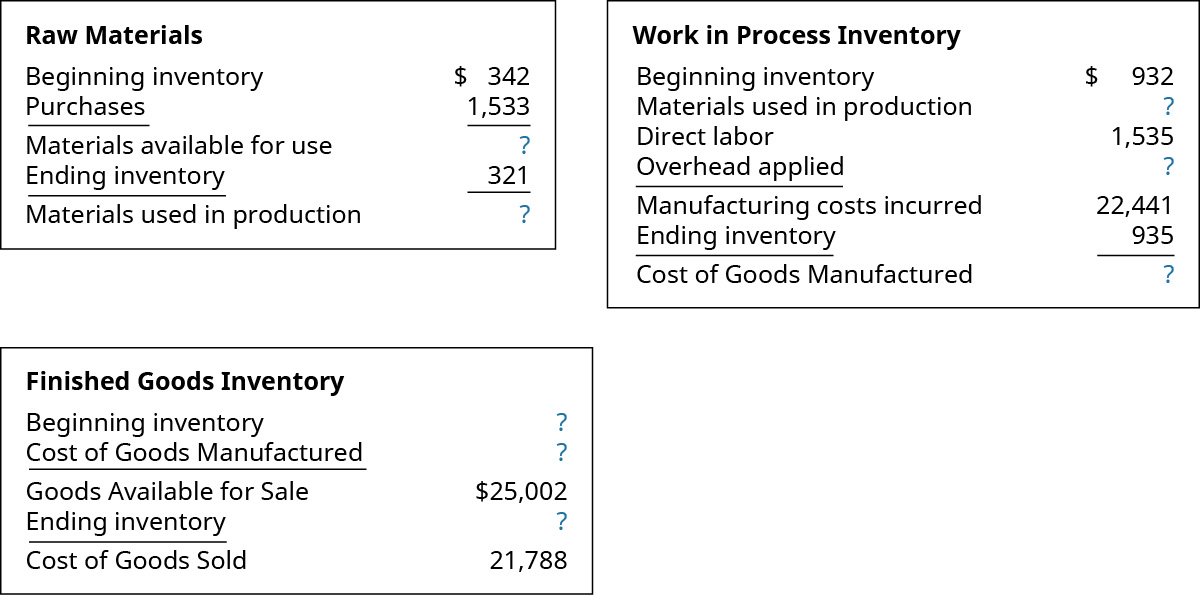
(Figure)During the year, a company purchased raw materials of $77,321, and incurred direct labor costs of $125,900. Overhead is applied at the rate of 75% of the direct labor cost. These are the inventory balances:

Compute the cost of materials used in production, the cost of goods manufactured, and the cost of goods sold.
(Figure)Freeman Furnishings has summarized its data as shown:
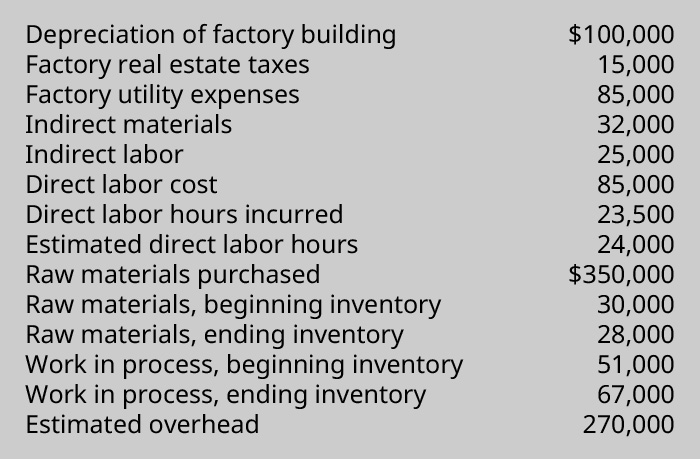
Compute the cost of goods manufactured, assuming that the overhead is allocated based on direct labor hours.
(Figure)Summary information from a company’s job cost sheets shows the following information:

What are the balances in the work in process inventory, finished goods inventory, and cost of goods sold for April, May, and June?
(Figure)Complete the information in the cost computations shown here:
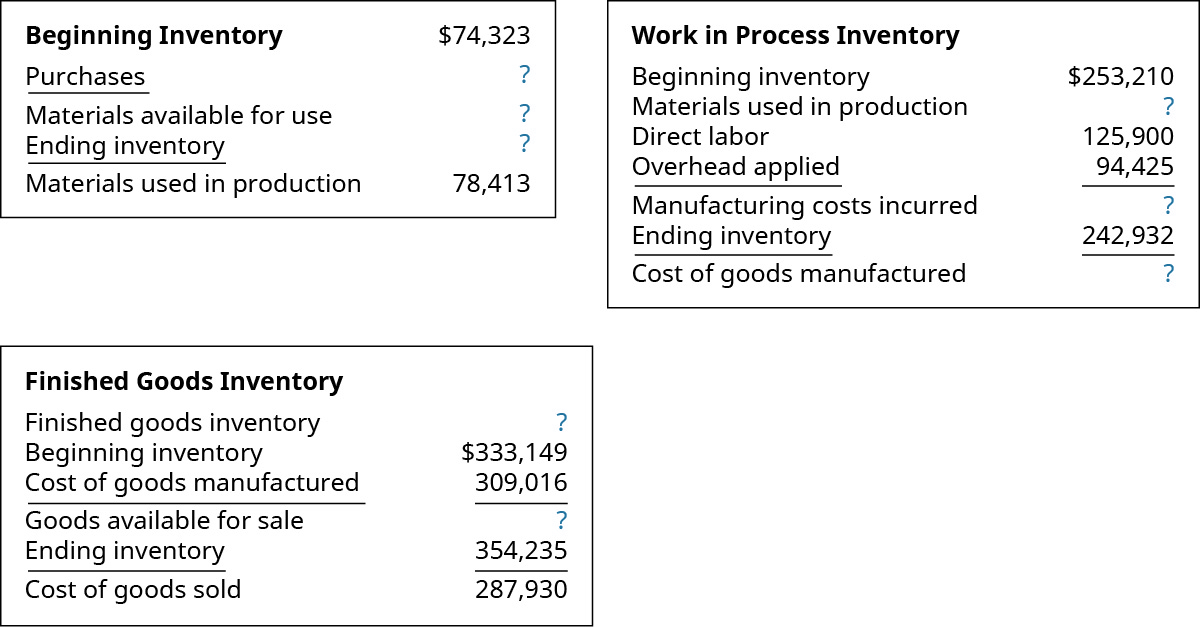
(Figure)During the year, a company purchased raw materials of $77,321 and incurred direct labor costs of $125,900. Overhead is applied at the rate of 75% of the direct labor cost. These are the inventory balances:

Compute the cost of materials used in production, the cost of goods manufactured, and the cost of goods sold.
(Figure)Freeman Furnishings has summarized its data as shown. Direct labor hours will be used as the activity base to allocate overhead:
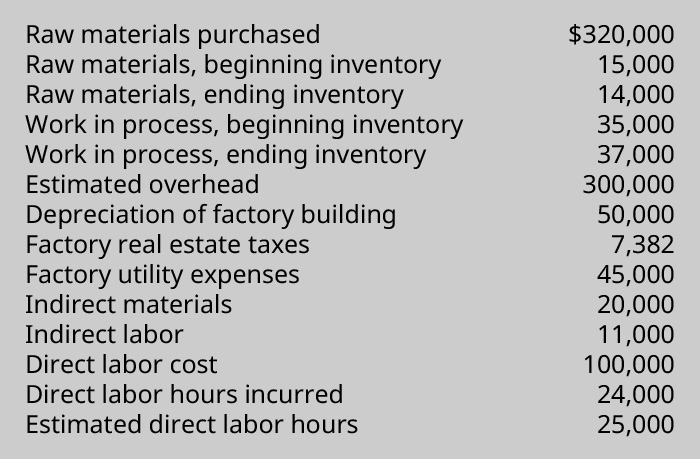
Compute the cost of goods manufactured.
(Figure)What are the similarities in calculating the cost of materials used in production, the cost of goods manufactured, and the cost of goods sold?

